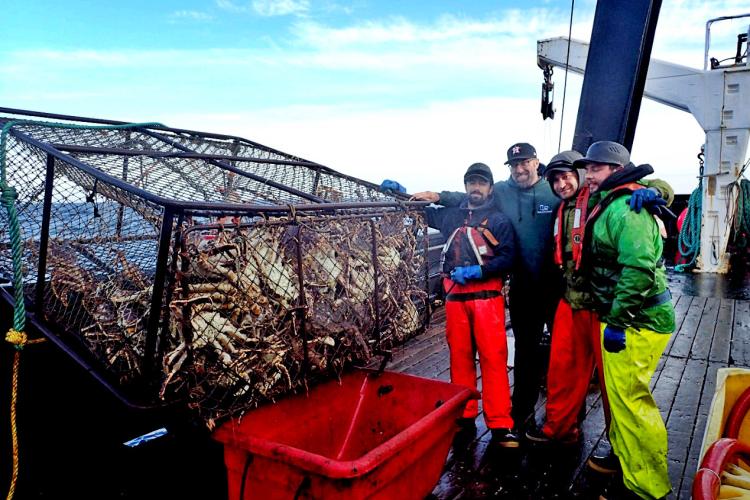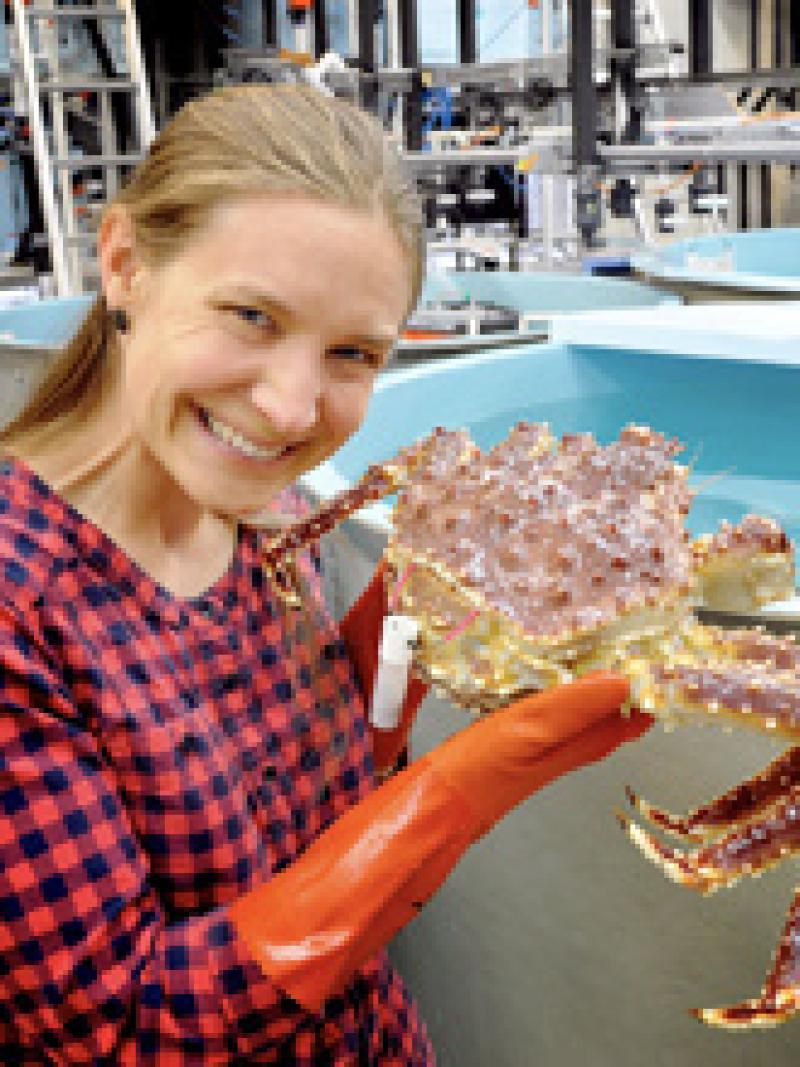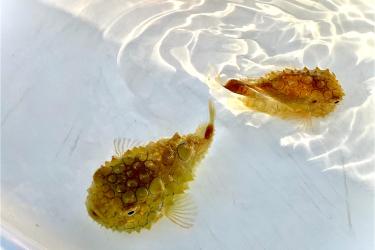
A crab pot is brought on board
Well, we set our crab pots in the right spot! Lots of red king crabs couldn’t resist the bait. We had plenty of choices on which ones to tag. I was worried that we might not get enough crab – it’s always nice when a research project goes to plan on the first try!
For this project we’re only tagging mature male crab, which means they have a carapace (top shell) length of at least 120 mm (4.7 inches). When we brought up a pot, all the female and small male crabs were thrown back quickly. We kept the large males in a tank of nice, cold water on our boat until they were tagged. We wanted to keep them as healthy and happy as possible.
Tagging a crab is a bit tricky because every year or two crabs shed their shell and grow a new one in a process called molting. So, we can’t just glue an acoustic tag to a crab’s shell if we want it to stay with the crab for a long period of time. Instead we give each crab a piercing – kind of like for an earring – but, through a muscle at the back of the crab. A piece of plastic tubing goes through the piercing (pink in the photo) and the acoustic tag hangs from the tubing. Now, when the crab molts, the tag stays attached. I tested this technique in our lab, and it worked great!

To get all 150 crabs tagged we played a game of “pass the crab”. As a crab was passed down the line we measured it, assigned a tag number, and attached the acoustic tag. Luckily, it was a nice, calm, sunny day. If the boat was really rocking around, I probably would have stabbed my fingers more with the needle that I use to tag the crab!

Once we got all the crabs tagged, we released them in the same exact spot where they were caught. Since we’re looking at how the crabs move, we didn’t want to confuse their little crabby brains by releasing them in a different spot from where they were captured! Now our crabs are back on the seafloor with just a little extra decoration attached to their backs! I can’t wait to re-find them in October with the Saildrone – it will be so interesting to see where they’ve gone.





